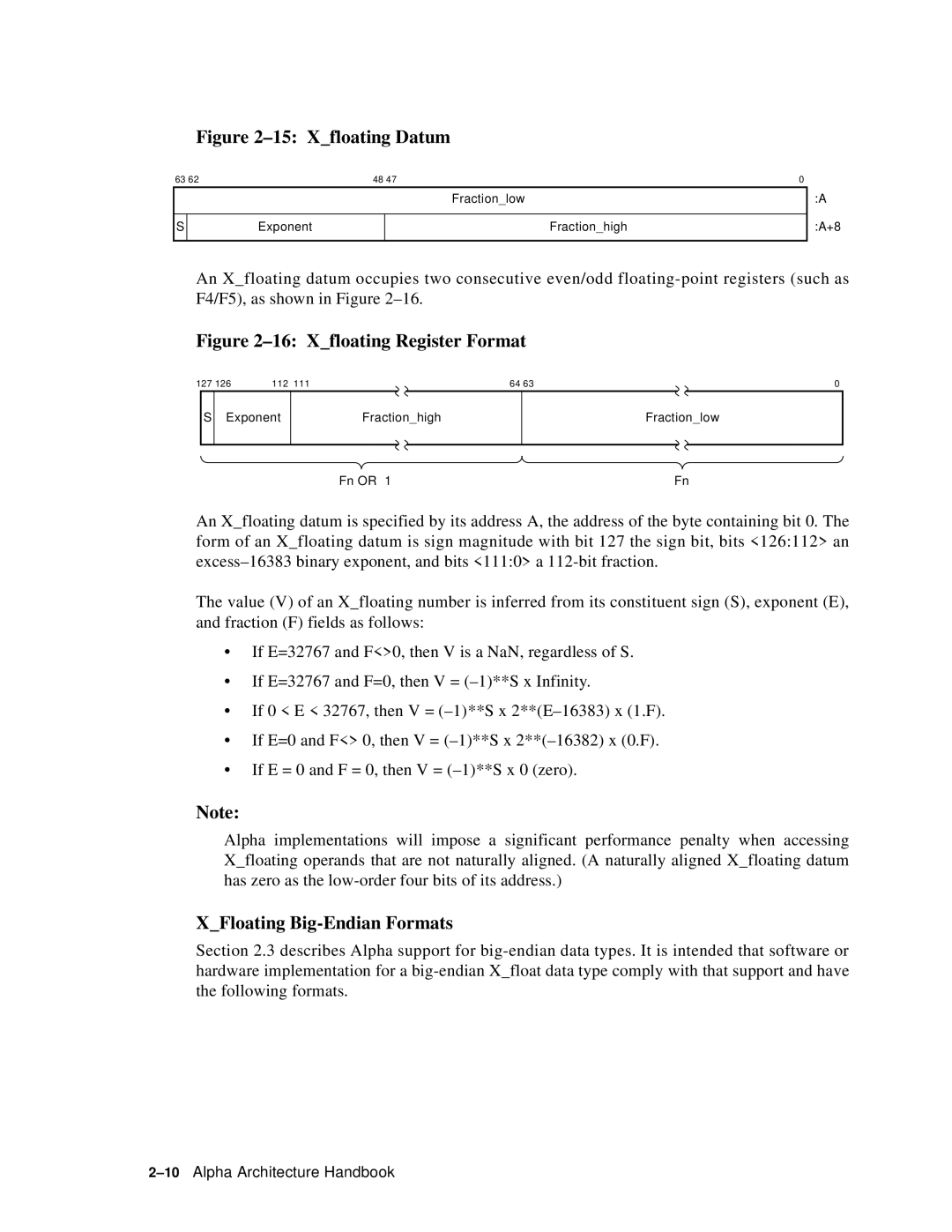
Figure 2–15: X_floating Datum
63 62 | 48 47 | 0 | ||
|
|
|
| Fraction_low |
|
|
|
| |
S |
| Exponent |
| Fraction_high |
|
|
|
|
|
:A
:A+8
An X_floating datum occupies two consecutive even/odd
Figure 2–16: X_floating Register Format
127 126 | 112 | 111 | 64 63 | 0 |
S Exponent
Fraction_high
Fraction_low
Fn OR 1 | Fn |
An X_floating datum is specified by its address A, the address of the byte containing bit 0. The form of an X_floating datum is sign magnitude with bit 127 the sign bit, bits <126:112> an
The value (V) of an X_floating number is inferred from its constituent sign (S), exponent (E), and fraction (F) fields as follows:
•If E=32767 and F<>0, then V is a NaN, regardless of S.
•If E=32767 and F=0, then V =
•If 0 < E < 32767, then V =
•If E=0 and F<> 0, then V =
•If E = 0 and F = 0, then V =
Note:
Alpha implementations will impose a significant performance penalty when accessing X_floating operands that are not naturally aligned. (A naturally aligned X_floating datum has zero as the
X_Floating Big-Endian Formats
Section 2.3 describes Alpha support for
